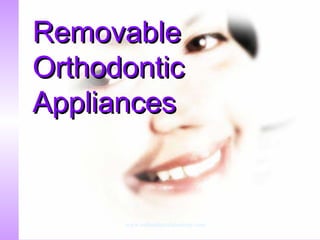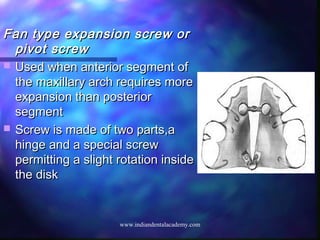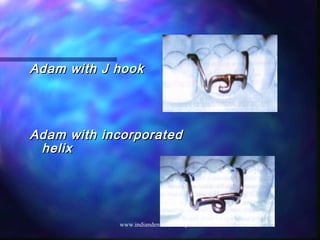The document discusses removable orthodontic appliances which are devices that patients can insert and remove themselves. The historical development and classification of these appliances are outlined, along with their advantages, disadvantages, and case selection criteria. It also details various components, types of labial bows, and factors affecting the design and construction of these appliances.


























































































































































